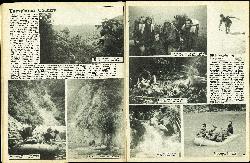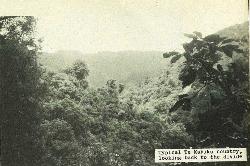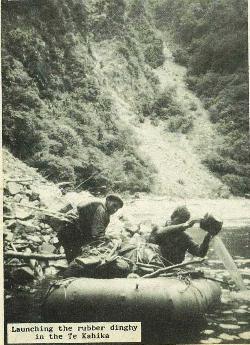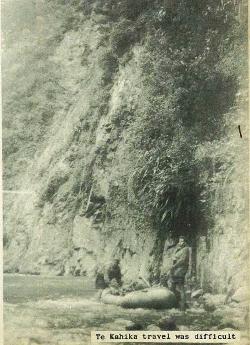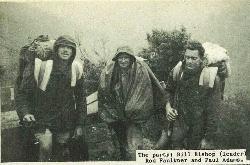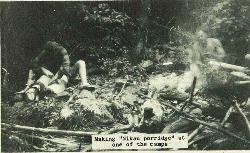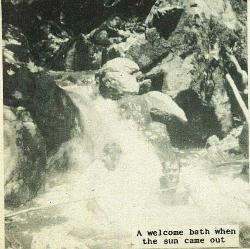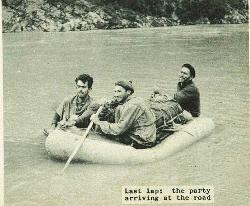32
Unexplored Country
The spirit of adventure, without which man would still be living in caves, is much watered down in these days of easy living, when almost the only thing left to do is to have a shot at reaching the moon.
Yet in New Zealand there are still unexplored regions, or "blanks on the map", and one of these lies in the heart of the 3000 square miles of hill country bounded by lines running from Gisborne to Opotiki to East Cape.
In the tradition of the early explorers, three experienced members of the Gisborne Canoe and Tramping Club set out last month to cross the Raukumara divide, due west of Te Puia Springs, into the Te Kahika stream, and from there to the Motu River and the highway at Houpoto.
The Te Kahika country, west of the divide crossing, was found to consist of steep, broken hills covered with almost impenetrable bush, with the rivers running in impassable gorges. Several days of climbing and descending were spent before the party was able to launch its rubber dinghy in the lower reaches of the Te Kahika, and start a hazardous journey between towering cliffs to the Motu. Running short of food, they eked out their rations with the edible portions of the nikau palms which they discovered there, while waiting for the flooded river to drop. Now a day overdue, they were located by a searching plane, which dropped food parcels, and the next day, when the river was negotiable, they completed the journey, arriving at Houpoto at 5 p.m.
33
Since Gisborne trampers and canoeists have started investigating the almost unknown "heart" of the East Coast-Bay of Plenty hinterland, much has been learned of the type of country there, and much practical knowledge has been assembled of how to make progress through its heavy bush and rugged gorges. Rescue techniques have been evolved, and proved in practice, particularly by the use of rubber dinghies, whereby lives could be saved in emergencies, such as aircraft being forced down in such country, or trampers or shooters being held up by floods, not only in the Motu, but in the many other similar regions in New Zealand. The use of jet boats has also been considered in these circumstances.


